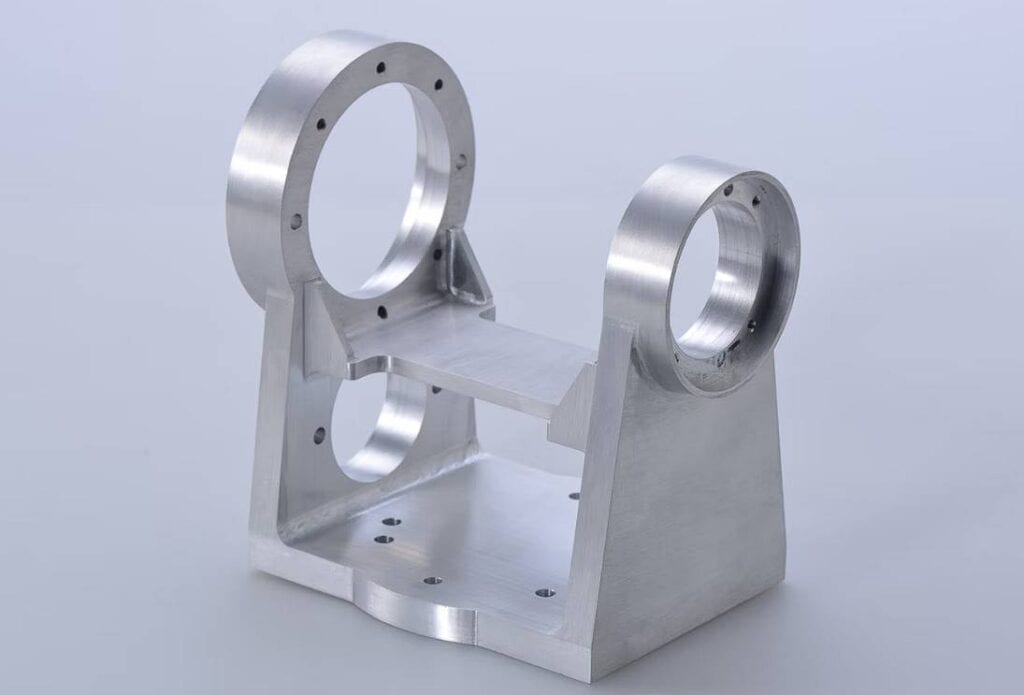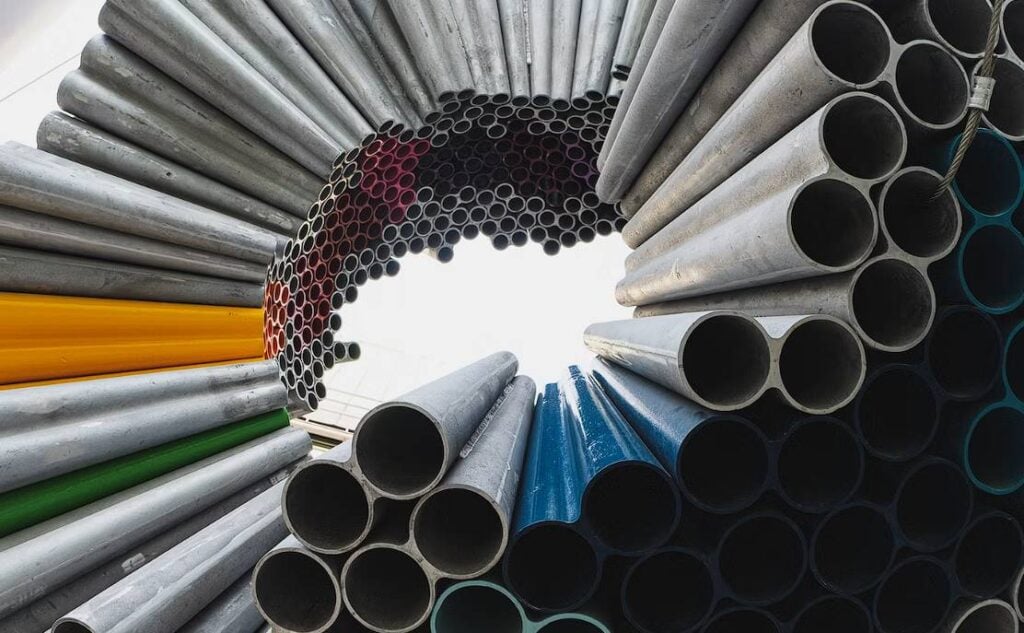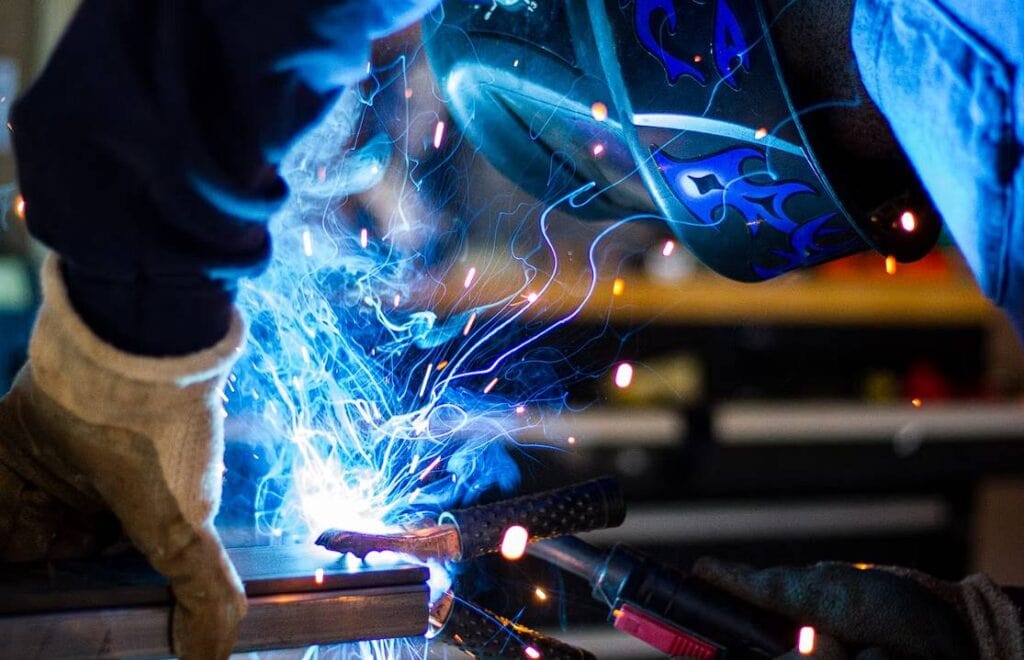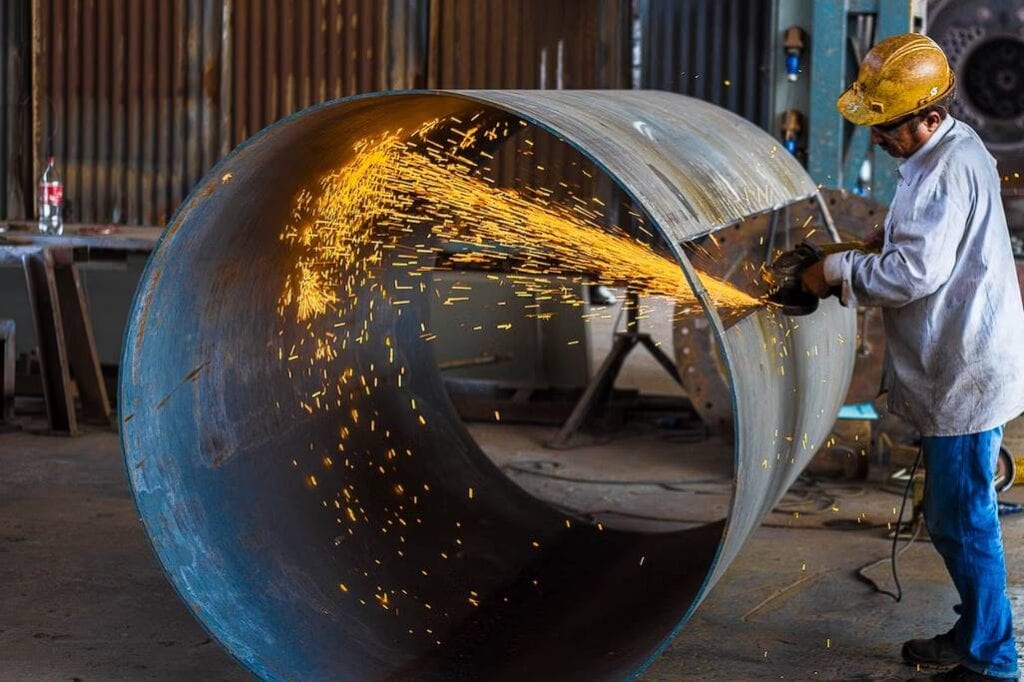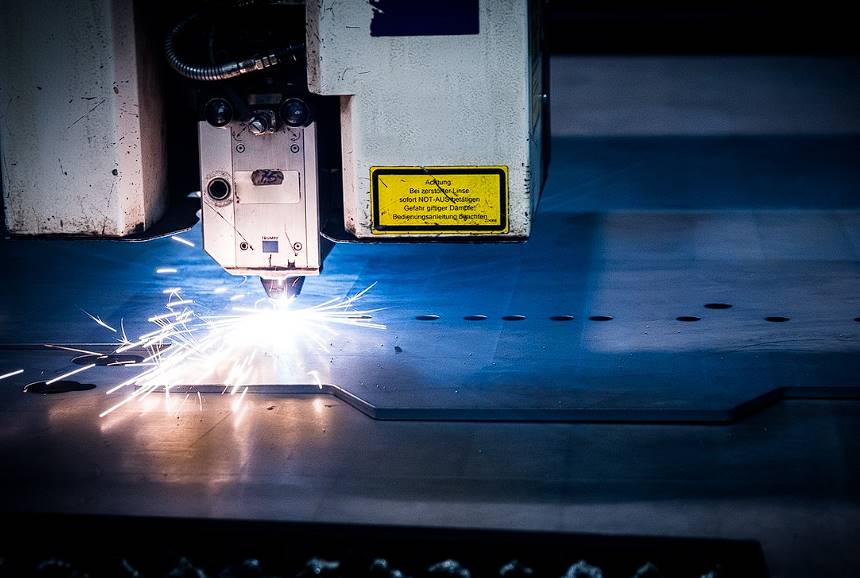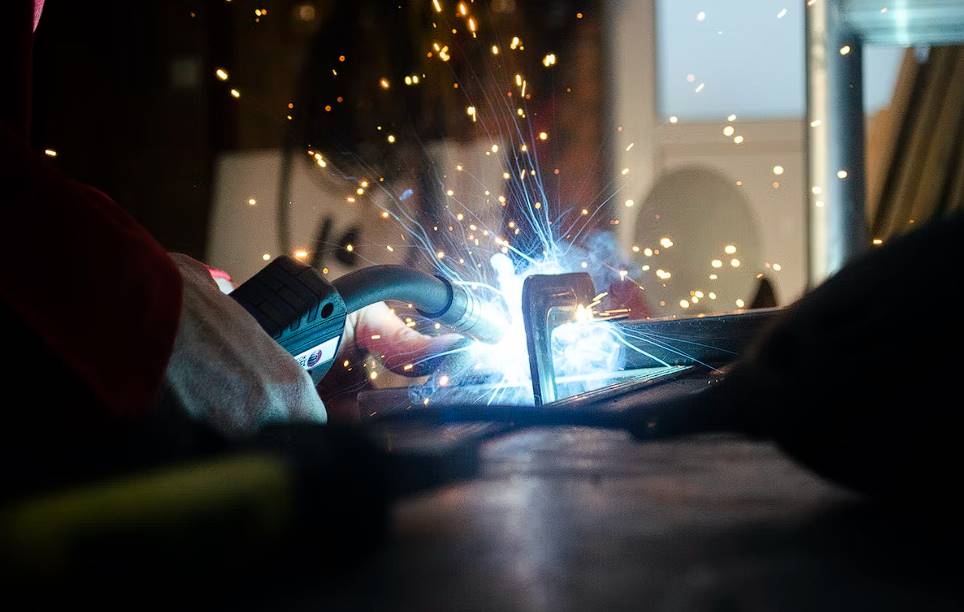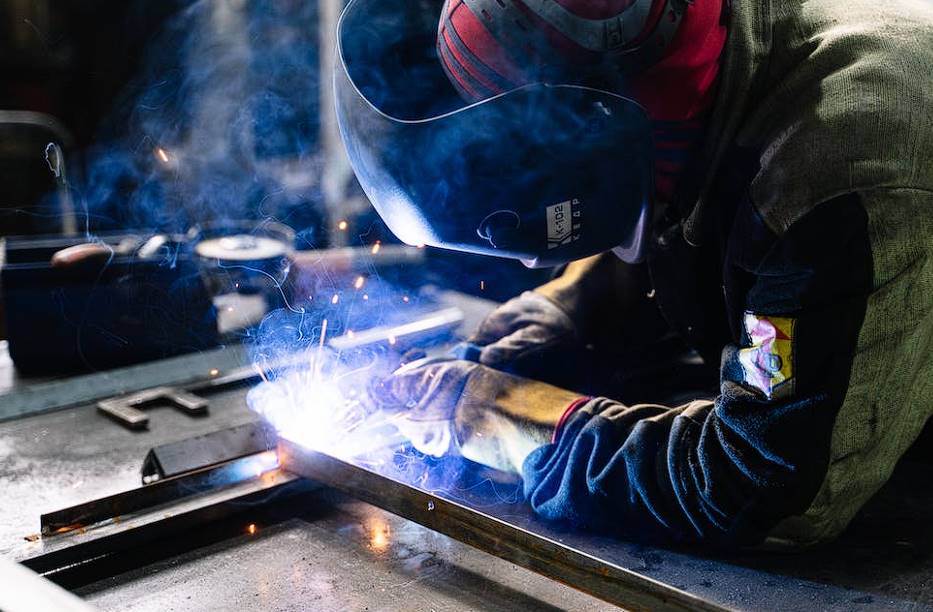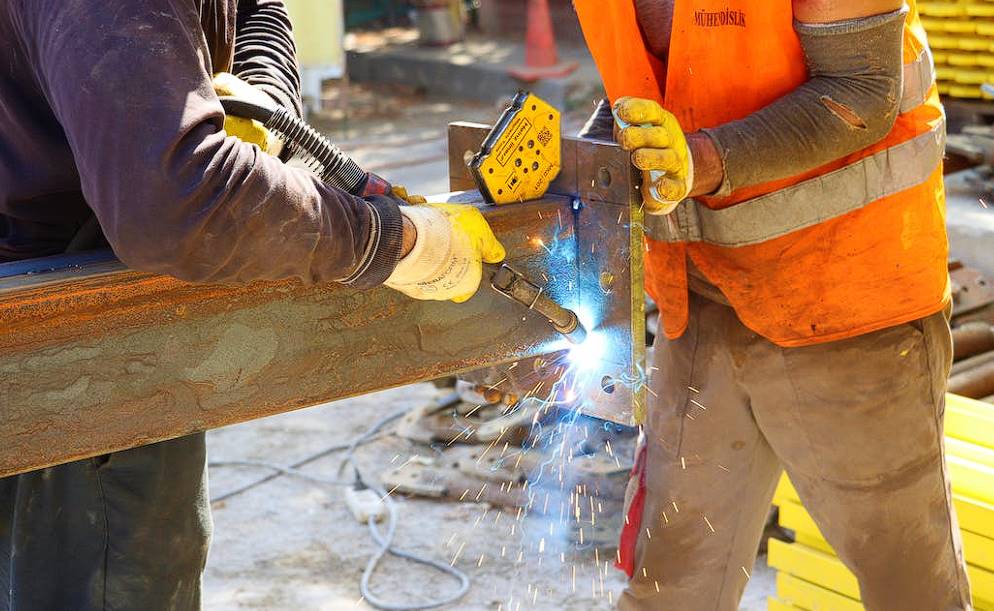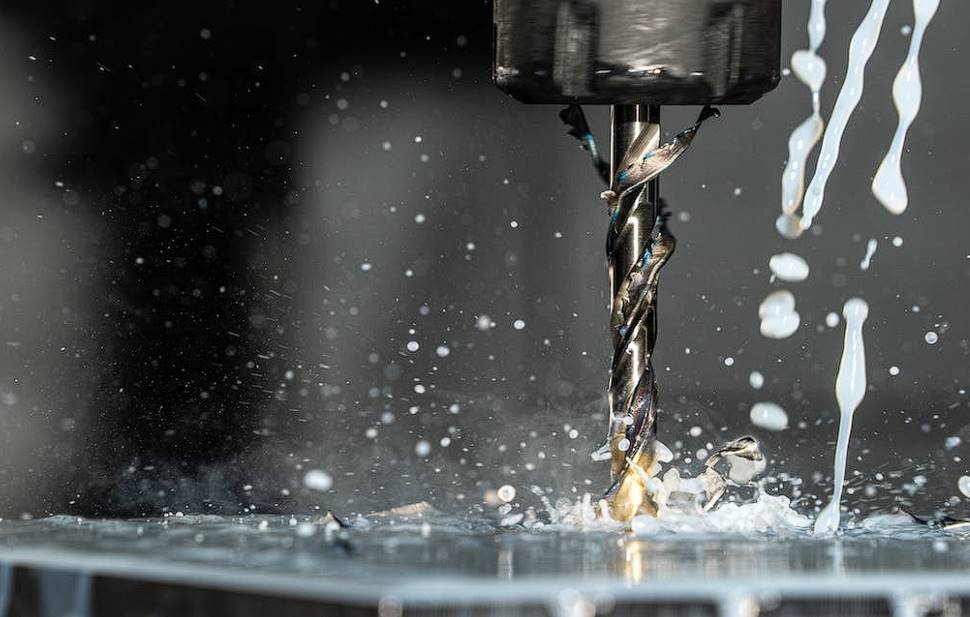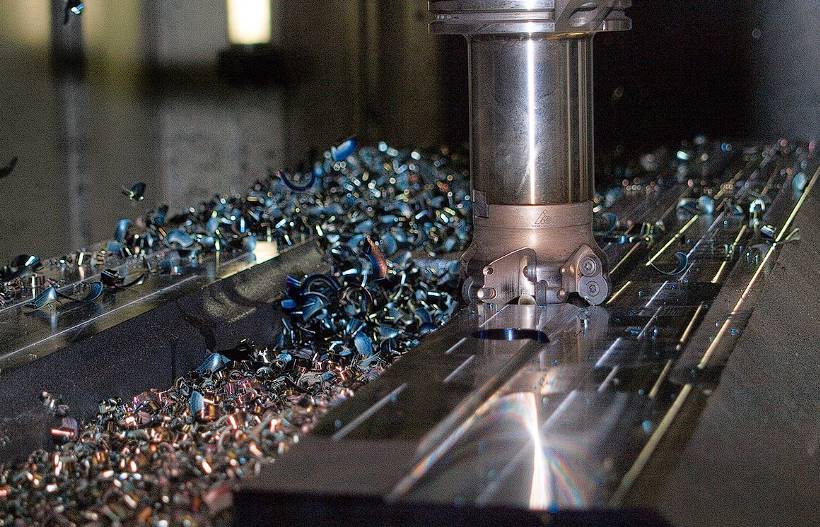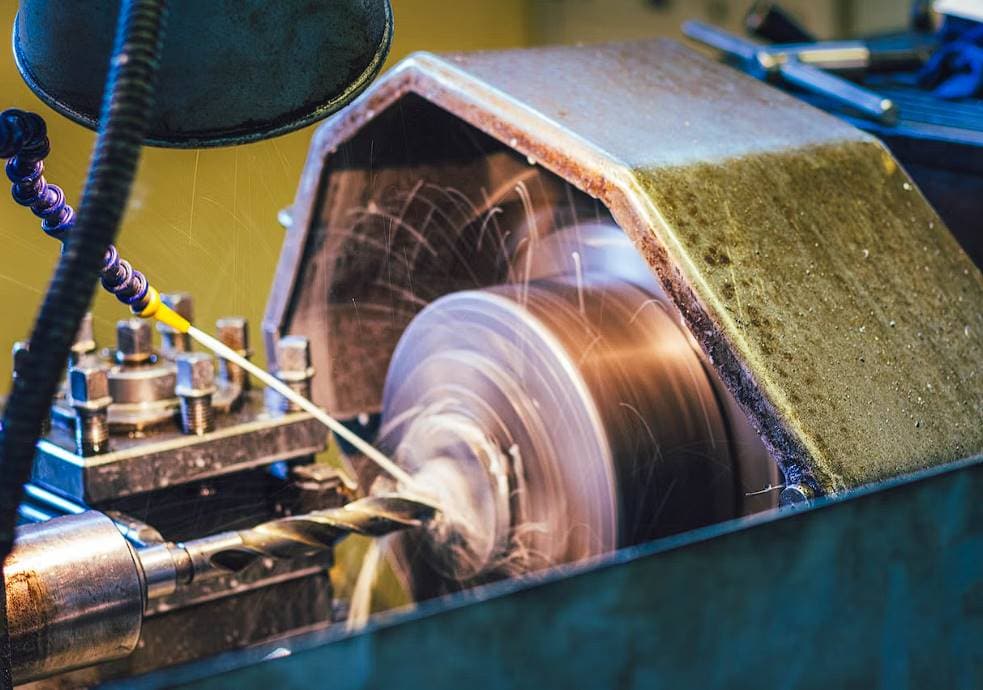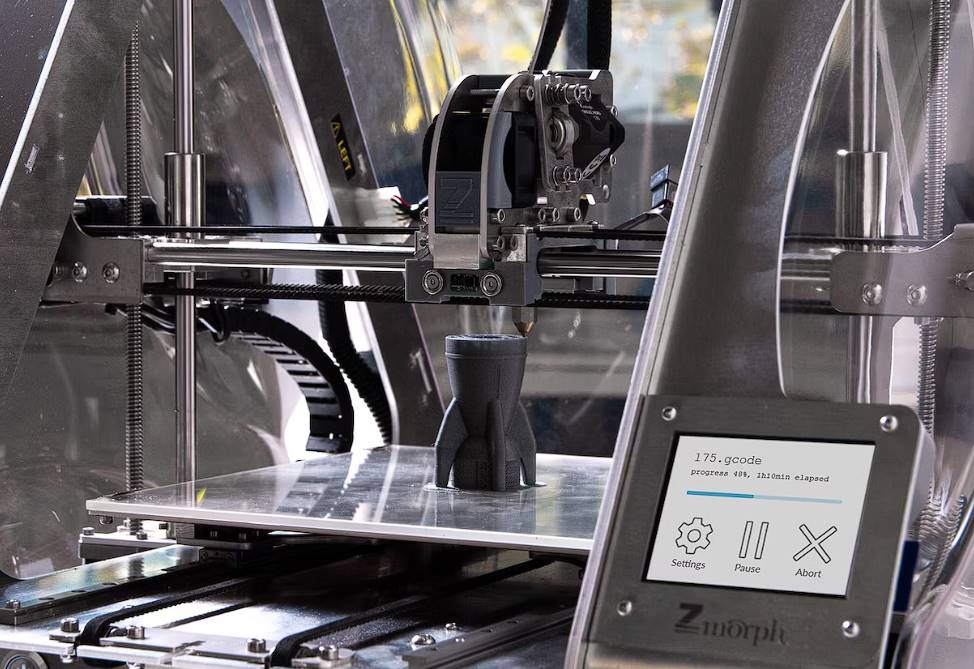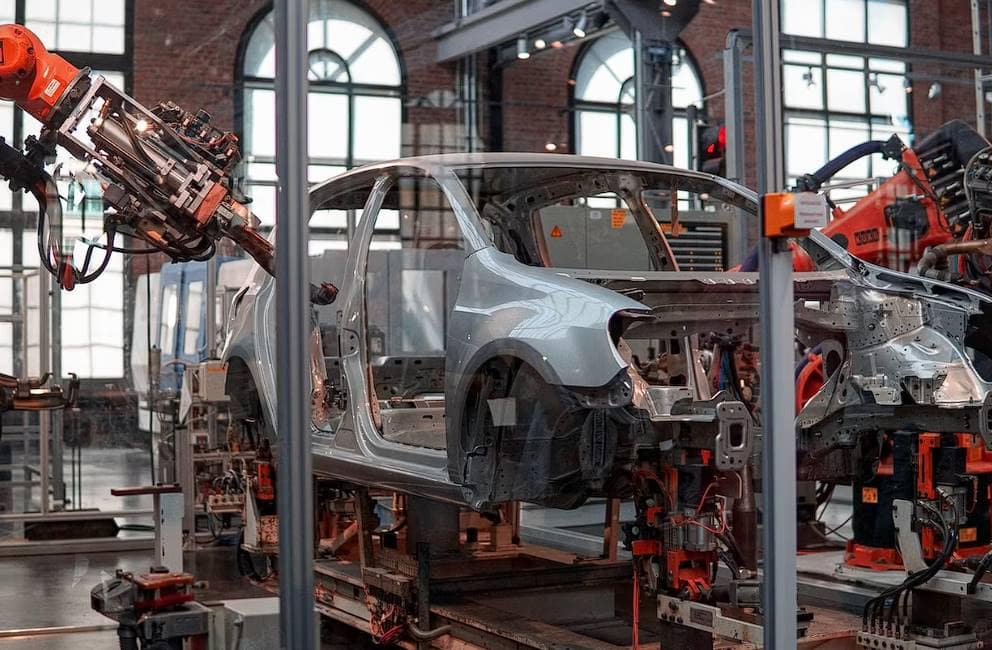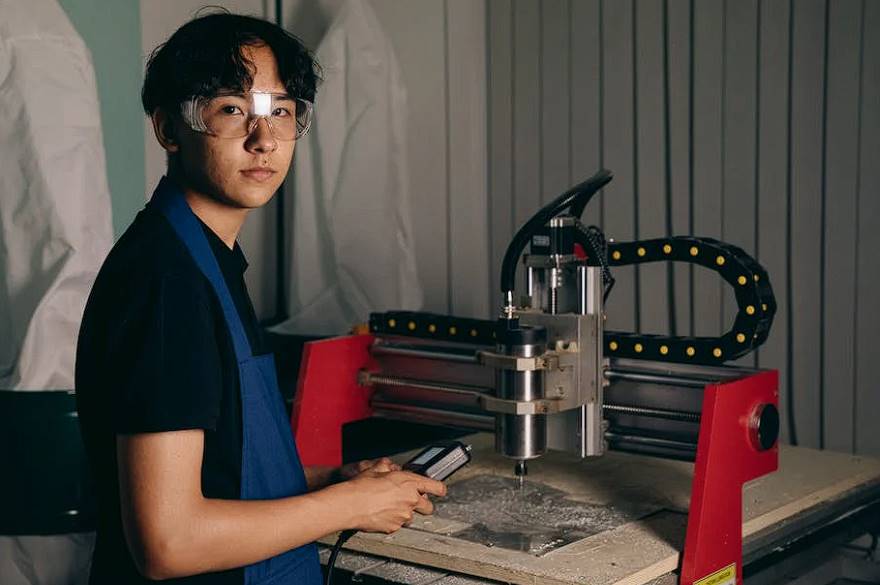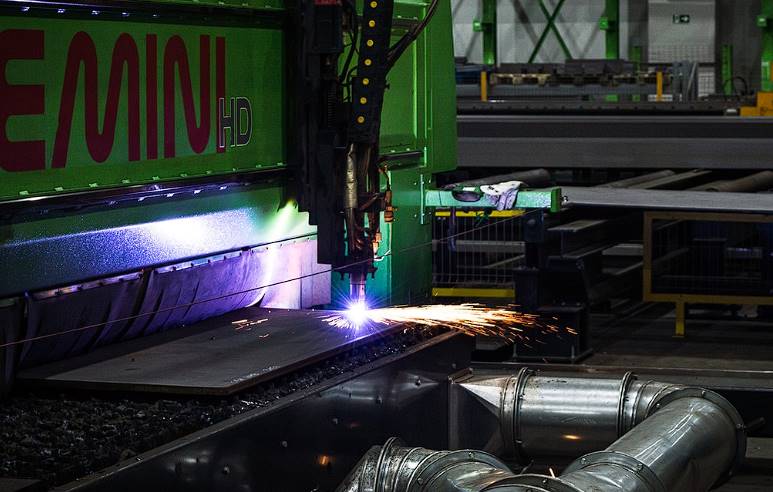In the fast-paced world of metal design and fabrication, engineers, builders, hobbyists, and people who like to do things themselves often wonder if hot-rolled steel can rust. This question, which seems simple, leads to a more in-depth study of steel's qualities, how different manufacturing processes affect its rust resistance, and the steps that can be taken to keep it safe. Hot-rolled steel is used in many building and manufacturing projects worldwide. It is known for having a rough surface and being easily shaped at high temperatures.
But how well it stands up to the weather, especially rust, is exciting and vital. In this blog post, we'll look at the science behind how rust forms on hot-rolled steel, contrast its resistance to rusting with that of other types of steel and suggest ways to keep it safe from nature's harsh forces. Come with us as we break down the complicated world of hot-rolled steel and how it fights rust. This information will be helpful for anyone who works with this flexible material.
Getting To Know Metal Rust
Rust is a familiar yet complex phenomenon that affects a wide range of metal surfaces and structures, posing challenges in aesthetics and structural integrity. Delving into the science and art behind rust formation reveals a multifaceted interplay of chemical reactions, environmental factors, and material properties. From the towering spans of bridges to the intricate designs of metal art, understanding rust is pivotal in preserving the longevity and appearance of metal works.
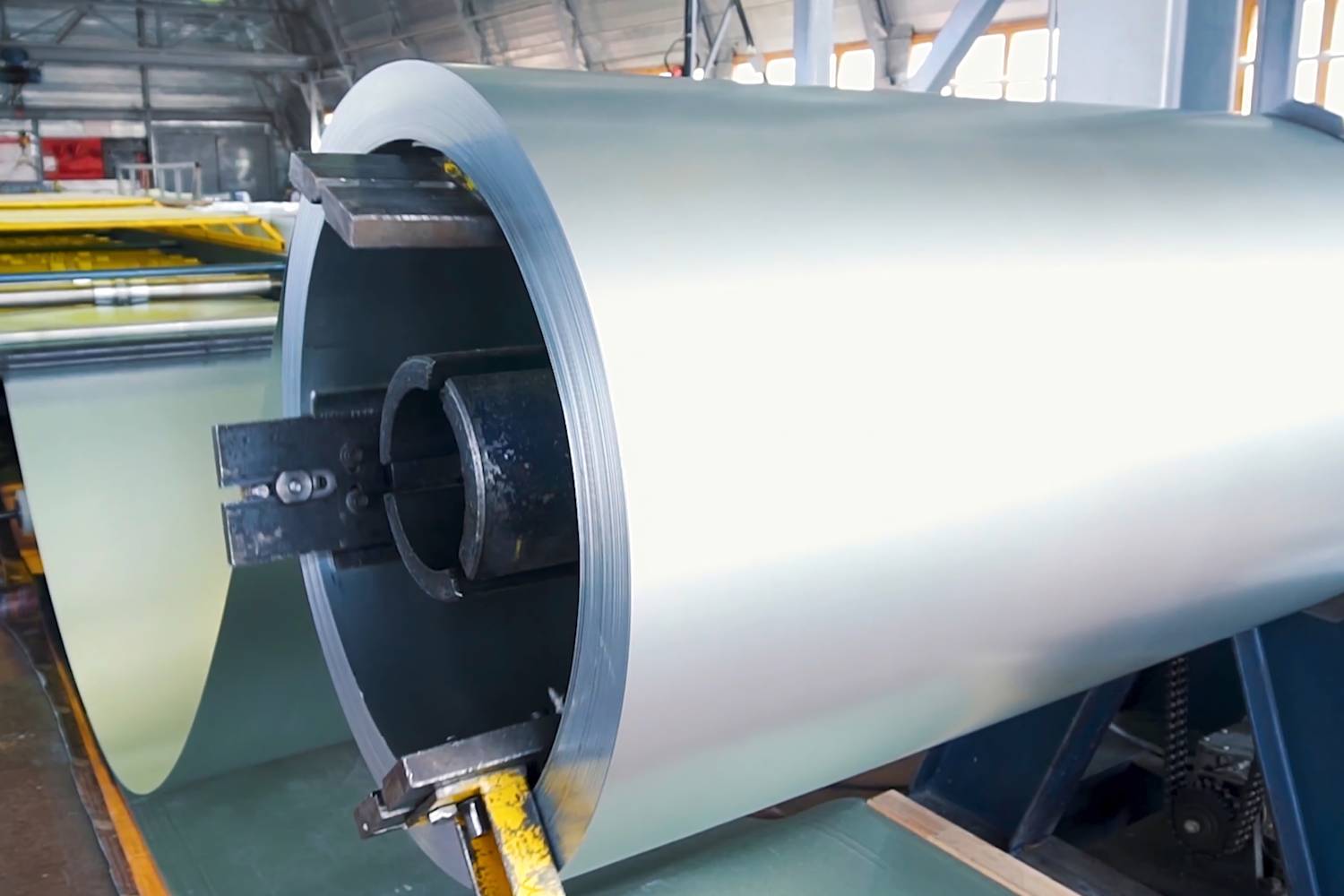
The Chemical Reaction Behind Rust
Rust occurs when iron, oxygen, and water combine through a chemical process known as oxidation. This reaction, which forms iron oxide or rust, is catalysed by water, including humidity in the air. Thus, virtually any environment is a potential catalyst for rust formation. Interestingly, pure water without electrolytes such as salt does not promote rusting, highlighting the role of environmental factors in corrosion.
The Unique Properties Of Rust
Rust, or oxidised iron, is unique because once formed, the iron consumed in the rusting process is irreversibly lost from the surface. This results in a voluminous rust layer that may not immediately compromise the metal's structural integrity but indicates the irreversible consumption of metal. Unlike other forms of metal oxidation that form protective barriers, rusting is a relentless process that continues until the metal is fully consumed or adequately protected.
Prevention And Artistic Induction
Understanding rust's causes and effects underpins prevention strategies and artistic endeavours to induce rust for aesthetic purposes. Preventive measures include coatings such as cold galvanising compounds, which offer a sacrificial layer to protect the metal underneath. Meanwhile, for artistic projects, inducing rust involves creating conditions that accelerate the oxidation process, providing a rustic patina in a controlled manner.
Modern Cleaning And Rust Inhibition
Today's cleaning technologies aim to prevent rust during and after cleaning, acknowledging the challenges rust poses in maintaining clean, active metal surfaces. The evolution from solvent-based to aqueous-based cleaning highlights the importance of preventing rust, particularly in environments where metal is exposed to water and oxygen, the vital elements for rust formation.
Artistic Exploration
The intentional rusting of metal, which can be achieved in less than 10 minutes using everyday household items, opens creative avenues for achieving an antique look on new items. Combining vinegar, hydrogen peroxide, and salt, this method mimics the natural rusting process, offering a quick and controlled way to age metal surfaces for aesthetic projects.
The Production Of Hot Rolled Steel
Hot-rolled steel production is a fascinating and complex process that plays a crucial role in the global steel industry. This process transforms raw materials into versatile steel products used in various applications, from construction to automotive manufacturing. Here's an integrated overview based on the insights gathered from various sources:
The Essence Of Hot-Rolled Steel Production
Hot-rolled steel production begins with procuring raw materials, primarily iron ore and coke. These materials are melted in blast furnaces (BF) or electric arc furnaces (EAF) to produce molten iron, which is then processed into steel. The steel is cast into semi-finished products such as slabs, blooms, billets, and beam blanks, which are the starting point for the production of hot-rolled steel.
The Hot Rolling Process
The hot rolling process involves heating the semi-finished steel products above their recrystallisation temperature, making the steel malleable and more accessible to shape. This process is performed at hot-rolling mills, where the steel is passed between two rolls to achieve the desired shape and thickness. The temperature during this process typically starts above 1,100°C and finishes at least at 900°C. The high temperatures ensure that the steel can be easily deformed to produce a wide range of hot-rolled products, including plates, sheets, coils, and various structural shapes.
Advantages And Applications
One of the main advantages of hot-rolled steel is its cost-effectiveness compared to cold-rolled steel. This makes it a popular choice for applications with less critical surface quality and dimensional accuracy. Hot-rolled steel is widely used in construction projects, infrastructure, machinery, and automotive components manufacturing. Its versatility and strength make it an essential material in the engineering and construction industries.
Technological Innovations
Significant technological advancements have been made in producing hot-rolled steel, including developing strip-casting plants that combine casting and hot-rolling into a single process. This innovation streamlines production, reduces energy consumption, and speeds up manufacturing, highlighting the industry's ongoing efforts to improve efficiency and sustainability.
Susceptibility Of Hot Rolled Steel To Rust
Hot-rolled steel's susceptibility to rust is a significant concern across various industries, from construction to automotive manufacturing. This vulnerability arises from the steel's exposure to environmental elements, particularly moisture, accelerating the oxidation process. Understanding the nature of this susceptibility and adopting preventive measures can significantly mitigate the risk of corrosion, preserving the integrity and longevity of hot-rolled steel products.
The Nature Of Rust On Hot-Rolled Steel
Hot-rolled steel, known for its versatility and strength, undergoes a manufacturing process at high temperatures, which does not inherently protect it against the environmental factors that cause rust. Rust, or iron oxide, forms when steel interacts with oxygen in the presence of water or moisture in the air. This reaction is superficial and can penetrate deep into the metal, compromising its structural integrity and aesthetic appeal.
Factors Influencing Rust Formation
- Environmental Exposure: Hot-rolled steel stored or used in humid environments, or those with fluctuating temperatures, is more prone to rust. With its high humidity levels, the monsoon season particularly exacerbates this issue, making preventive care crucial during these times.
- Surface Condition: The manufacturing process of hot-rolled steel results in a scale on the surface, which can offer minimal initial protection. However, once this scale is breached, the underlying metal becomes exposed to the elements, accelerating rust formation.
- Chemical Composition: Additives in steel, such as boron or gadolinium, can influence its corrosion resistance. Research, such as that conducted on 0.5%Gd-0.8%B-stainless steels, indicates that varying these components can alter the steel's susceptibility to corrosion, particularly in specific environments like those simulating nuclear waste treatment conditions.
Preventive Measures Against Rust
- Proper Storage: Ensuring hot-rolled steel is stored in dry, well-ventilated areas can significantly reduce rust formation. Using desiccants and maintaining an optimal environment in storage facilities can help control moisture levels.
- Protective Coatings: Protective coatings or paints can shield the steel from direct exposure to moisture. These coatings act as a barrier, preventing the chemical reaction between steel and the elements that cause rust.
- Regular Maintenance: Regular inspections for signs of rust and immediate remediation can prevent localised corrosion from spreading. Techniques such as sandblasting or applying rust inhibitors to affected areas can restore the protective layer on the steel.
- Design Considerations: In construction and manufacturing, designing with rust prevention in mind—such as allowing for proper water drainage and avoiding traps where moisture can collect—can prolong the life of hot-rolled steel structures and components.
- Material Selection: For applications where rust resistance is critical, hot-rolled steel with specific alloying elements or cold-rolled steel, which undergoes additional processing to improve surface finish and dimensional accuracy, might be more appropriate.
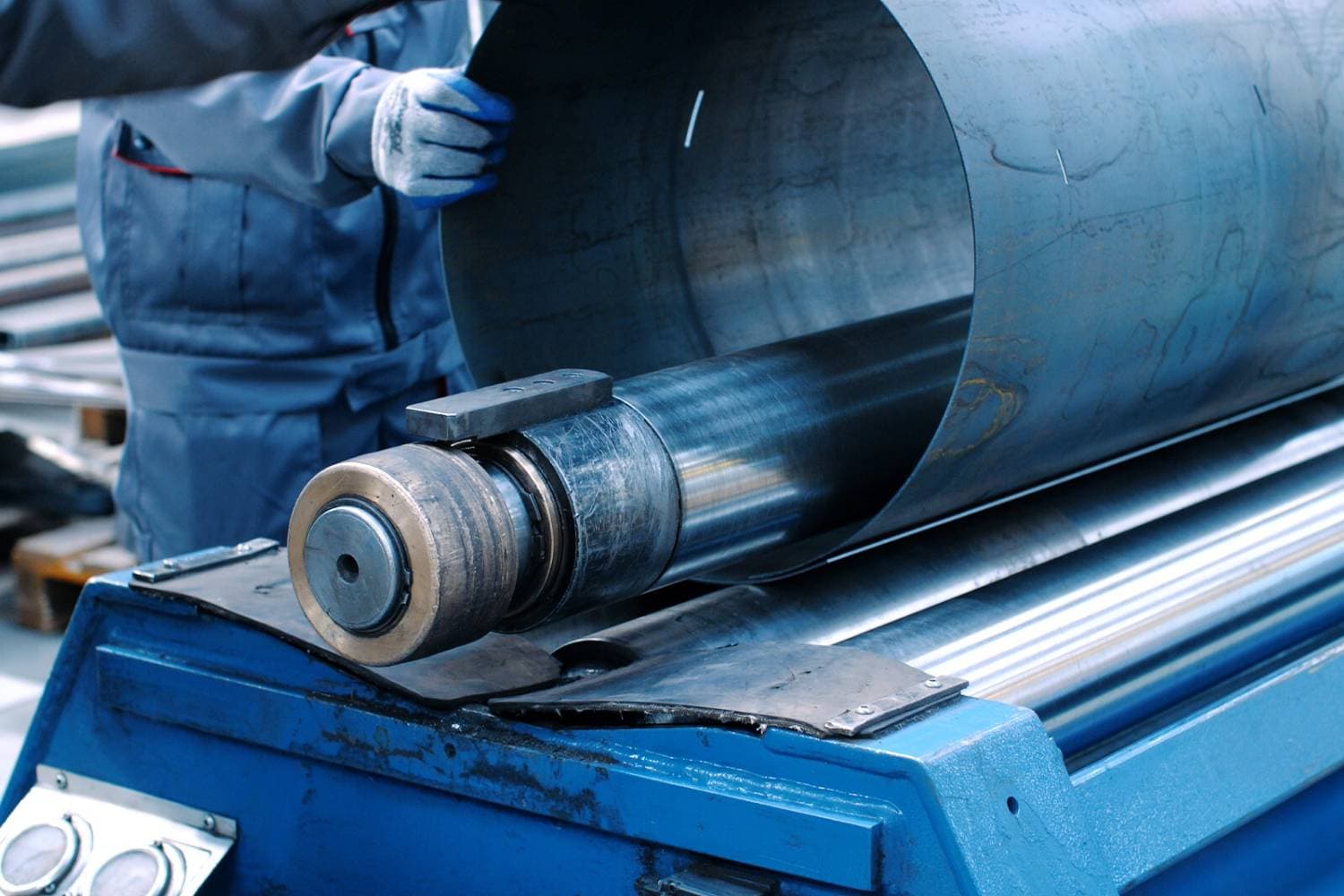
Factors Influencing Rust Formation On Hot Rolled Steel
The susceptibility of hot-rolled steel to rust is a multifaceted issue influenced by various factors, ranging from environmental conditions to the steel's inherent characteristics. Understanding these factors is crucial for mitigating rust and ensuring the longevity and integrity of hot-rolled steel products. This comprehensive overview synthesises insights from multiple sources to highlight the key factors influencing rust formation on hot-rolled steel.
Oxide Scale Characteristics
The formation of oxide scale during the hot rolling process plays a dual role. While it can offer a degree of corrosion protection by acting as a barrier against moisture and oxygen, its effectiveness is contingent on its thickness, uniformity, and adherence to the steel surface. A thin, cracked, or unevenly distributed oxide layer can accelerate corrosion rather than prevent it. The composition of the oxide scale, influenced by elements like silicon, manganese, and aluminium, also affects its protective capabilities.
Environmental Exposure
Exposure to harsh environmental conditions, particularly those rich in chlorides such as seawater, significantly increases the risk of rust. Chlorides can penetrate protective oxide layers, leading to pitting corrosion, a particularly aggressive form of rust that compromises the steel's structural integrity.
Acidic Conditions
The interaction of hot-rolled steel with acidic environments can deteriorate the protective oxide layer, leading to uniform corrosion. Steel alloys' susceptibility to acid-induced corrosion varies and is influenced by the acid's concentration, type, and environmental temperature.
Galvanic Reactions
Galvanic corrosion occurs when hot-rolled steel comes into contact with a dissimilar metal, creating an electrochemical cell that accelerates corrosion. The extent of galvanic corrosion is influenced by the metals involved, their surface areas, and environmental conditions.
Mechanical And Thermal Stresses
Mechanical damage and thermal stresses can compromise the integrity of the oxide layer, exposing the underlying steel to corrosive elements. Furthermore, extreme temperatures can alter the steel's microstructure and oxide layer, affecting its corrosion resistance.
Moisture And Oxygen Availability
Moisture and oxygen are crucial for forming and maintaining the protective chromium oxide layer on stainless steel. In environments where oxygen is scarce, such as tight crevices, the passivation layer may fail to regenerate, increasing the risk of corrosion.
Material Transference
The inadvertent transference of iron or steel particles onto the surface of hot-rolled steel during manufacturing processes can introduce sites for corrosion initiation. Ensuring cleanliness and avoiding cross-contamination during processing are vital for maintaining the steel's corrosion resistance.
Conclusion
Hot-rolled steel is a versatile material used in various industries, including construction, infrastructure, and automotive manufacturing. Various manufacturing processes, including the presence of water and electrolytes, influence its resistance to rusting. Rust is a common and complex phenomenon that occurs when iron, oxygen, and water combine through oxidation, which is catalysed by the presence of water. Rust is unique in that once formed, the iron consumed in the rusting process is irreversibly lost from the surface, resulting in a voluminous rust layer.
Preventive measures include coatings like cold galvanising compounds, which offer a sacrificial layer to protect the metal underneath. For artistic projects, inducing rust involves creating conditions that accelerate the oxidation process, providing a rustic patina in a controlled manner. Modern cleaning technologies aim to prevent rust during and after cleaning, particularly when metal is exposed to water and oxygen.
Artistic exploration involves intentionally rusting metal, which can be achieved using everyday household items in less than 10 minutes. Hot-rolled steel production is a complex process of transforming raw materials into versatile steel products used in various applications, such as construction and automotive manufacturing. Its cost-effectiveness makes it a popular choice for applications where surface quality and dimensional accuracy are less critical.
Technological advancements in hot-rolled steel production have improved efficiency and sustainability, but the steel's susceptibility to rust remains a significant concern. Rust forms when steel interacts with oxygen in the presence of water or moisture, compromising its structural integrity and aesthetic appeal. Factors influencing rust formation include environmental exposure, surface conditions, and chemical composition.
Proper storage, protective coatings, regular maintenance, design considerations, and material selection are critical factors in mitigating rust and ensuring the longevity and integrity of hot-rolled steel products. Oxide scale characteristics, such as thickness, uniformity, and adherence to the steel surface, play a dual role in corrosion protection.
Environmental exposure, particularly those rich in chlorides, increases the risk of rust, while acidic conditions can deteriorate the protective oxide layer, leading to uniform corrosion. Galvanic corrosion occurs when hot-rolled steel comes into contact with dissimilar metals, creating an electrochemical cell that accelerates corrosion. Mechanical damage and thermal stresses can compromise the integrity of the oxide layer, exposing the underlying steel to corrosive elements.
Moisture and oxygen availability are crucial for forming and maintaining the protective chromium oxide layer on stainless steel. Material transference during manufacturing processes can introduce sites for corrosion initiation, so ensuring cleanliness and avoiding cross-contamination is vital for maintaining the steel's corrosion resistance.
Content Summary
- Hot-rolled steel, widely used in construction and manufacturing, raises questions about its rust resistance.
- This post explores the science behind rust on hot-rolled steel and how it compares to other steel.
- Rust, a complex phenomenon, affects metal surfaces, challenging their aesthetics and structural integrity.
- Understanding rust involves examining chemical reactions, environmental factors, and material properties.
- Rust forms through oxidation, where iron, oxygen, and water combine, catalysed by moisture.
- Pure water without electrolytes like salt does not promote rusting, highlighting the environmental impact on corrosion.
- Rust results in irreversible metal loss, forming a voluminous layer that may compromise structural integrity over time.
- Preventive strategies and artistic rust induction are key to managing rust for longevity and aesthetic purposes.
- Modern cleaning technologies focus on preventing rust, moving from solvent-based to aqueous-based solutions.
- Artistic rusting techniques allow for controlled aging of metal surfaces for creative projects.
- Hot-rolled steel production is crucial for various applications, from construction to automotive manufacturing.
- Hot-rolled steel is produced by melting raw materials like iron ore and coke in blast or electric arc furnaces.
- The hot rolling process heats steel above its recrystallisation temperature, making it malleable for shaping.
- Hot-rolled steel's cost-effectiveness makes it popular for projects with less critical surface quality.
- Technological advancements in hot-rolled steel production aim to improve efficiency and sustainability.
- Hot-rolled steel's rust susceptibility is a concern, with environmental exposure accelerating oxidation.
- The manufacturing process results in a surface scale that offers minimal initial protection against rust.
- Environmental exposure, especially to humid conditions, significantly increases hot-rolled steel's rust risk.
- Surface conditions, chemical composition, and additives affect hot-rolled steel's corrosion resistance.
- Proper storage in dry, well-ventilated areas can significantly reduce rust formation on hot-rolled steel.
- Protective coatings and regular maintenance are essential for preventing localised corrosion.
- Design considerations and material selection are crucial in enhancing hot-rolled steel's rust resistance.
- Oxide scale characteristics, including thickness and uniformity, influence hot-rolled steel's corrosion protection.
- Exposure to harsh conditions, like seawater, increases the risk of pitting corrosion on hot-rolled steel.
- Acidic environments can deteriorate hot-rolled steel's protective oxide layer, leading to uniform corrosion.
- Galvanic corrosion from contact with dissimilar metals accelerates corrosion on hot-rolled steel.
- Mechanical and thermal stresses can compromise the oxide layer's integrity, exposing steel to corrosive elements.
- Moisture and oxygen availability are crucial for maintaining stainless steel's protective chromium oxide layer.
- Inadvertent transference of iron or steel particles during manufacturing can introduce corrosion initiation sites.
- Understanding rust's causes and effects is essential for preventing corrosion and artistic rust induction.
- Preventive measures include using coatings and selecting appropriate steel grades for specific environments.
- Artistic rusting techniques offer controlled aging of metal surfaces for aesthetic projects.
- The production process of hot-rolled steel involves heating, shaping, and cooling steel to achieve desired products.
- Despite rust susceptibility, hot-rolled steel's versatility and strength are essential for various industries.
- Technological innovations in steel production focus on improving product quality and environmental sustainability.
- Environmental exposure to moisture and chlorides significantly influences rust formation on hot-rolled steel.
- Acidic conditions and galvanic reactions are key factors affecting hot-rolled steel's corrosion resistance.
- Mechanical damage and extreme temperatures can alter hot-rolled steel's microstructure, affecting its rust resistance.
- Proper storage and maintenance practices are crucial for mitigating rust on hot-rolled steel.
- Protective coatings and design considerations can enhance hot-rolled steel's durability and resistance to corrosion.
- Based on specific application requirements, material selection can improve hot-rolled steel's performance in corrosive environments.
- The oxide scale's role in corrosion protection highlights the importance of manufacturing processes in determining steel's rust resistance.
- The interplay of chemical reactions, environmental factors, and material properties shapes our understanding of rust on hot-rolled steel.
- Preventive strategies, informed by understanding rust formation, are essential for preserving the metal's longevity and appearance.
- Artistic rust induction allows for creative exploration of metal aging, enhancing the aesthetic appeal of metal works.
- The global steel industry relies on hot-rolled steel for its cost-effectiveness and versatility in various applications.
- Advances in hot-rolled steel production aim to meet the evolving needs of the infrastructure and manufacturing industries.
- The susceptibility of hot-rolled steel to rust underscores the importance of preventive measures and innovative production techniques.
- Environmental exposure and surface conditions are critical factors influencing hot-rolled steel's resistance to rust.
- The ongoing development of protective coatings and rust prevention technologies reflects the industry's commitment to enhancing steel's durability.
Frequently Asked Questions
Yes, hot-rolled steel can rust. Despite its robustness and versatility, it is susceptible to rust when exposed to moisture and oxygen, a process known as oxidation.
Rust forms on hot rolled steel through a chemical reaction involving iron (the primary component of steel), oxygen, and water. This reaction produces iron oxide, commonly known as rust, which can deteriorate the steel over time.
Yes, environments with high humidity, exposure to saltwater, or those rich in corrosive chemicals can accelerate the rusting process. Industrial areas with high levels of pollutants can also contribute to faster corrosion.
The hot rolling process creates a characteristic scale on the steel's surface, which can offer some initial protection against rust. However, if this scale is damaged or removed, the underlying steel becomes more vulnerable to rust.
Yes, rusting can be mitigated through various methods, including applying protective coatings, ensuring proper storage conditions, and using corrosion-resistant alloys. Regular maintenance and inspections can also help prevent rust formation.


